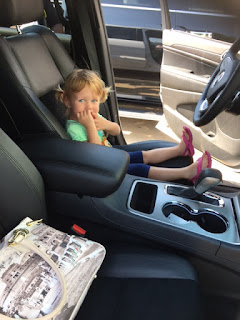Pecorino
Pecorino....the main cheese found in the Tuscany....produced from sheep milk....in fact the name comes because a sheep in Italian is called Pecora. Today was the day we decided to visit one of the factories outside Pienza where they make pecorino cheese.
Giuseppe, one of the four brothers who ownes it, conducted the tour. He has a special personality and he definitely made the tour fabulous. You can just see the passion and the pride, which i thought was amazing. He took about 30 minutes to explain in detail how pecorino is made, it was rather interesting....let me summarize a little....
The raw milk is mixed with rennet (enymes) to curdle it. The curds sink to the bottom of the container and are scooped out to dry before being placed in a salt solution. The set cheese is then formed into rounds. These are then placed in a cool humid cellar. The rinds are periodically dampened, Fattoria Pianporcino use tomato paste...which gives the ride dish appearance. One can also use olive oil. Flavours can be added either in the beginning or while aging. Black pepper and chili is added in the beginning because it is mixed into the cheese before forming the rounds. Flavours such as walnut, hay, truffle, wine....those are added when maturing, for example, cheeses are tacked inside a barrel, one layer cheese, one layer walnut leaves, then cheese, then leaves...etc etc...this will give the cheese the walnut flavour, which in fact is the traditional Tuscan flavour of pecorino cheese.
Pecorino is eaten either as a soft cheese after about 40 – 60 days maturation, or left in the cellar for up to 15 months (5 – 12 months is the average). When young,(Pecorino Fresco), you can expect the cheese to be soft and creamy.
A more mature Pecorino will have a darker rind, generally red or black, and the texture is soft and crumbly on the palate with a slightly tannic after-taste. It is generally believed that Pecorino does improve with ageing, as it acquires more character and structure.
The other cheese which is made with the left over whey is ricotta....which in fact means re-cooked. The interesting fact was, contrary to what i thought, is that ricotta has a much lower fat content than normal cheese, in fact its fat content is only about 6-7%.
I must say, the tour was very interesting, he also showed us where the rennet is added, then where the cheese is stirred, where the rounds are done, where it is stored...let me share some pics....
After the tour...time for tasting....wow...i expected some cheeses and some cracker...but what we got was a lunch tasting...there were bottles of red wine..beautiful cheese platters, with numbers on the cheese and a pamphlet with the matching numbers, there was cold meats (from a different supplier), salad and bread. I was so positively surprised. Let me share some pics...
That is it from me...ciao....we chat soon...i am off to eat some pecorino cheese now...my mouth is watering....and some red wine with it.













Comments
Post a Comment